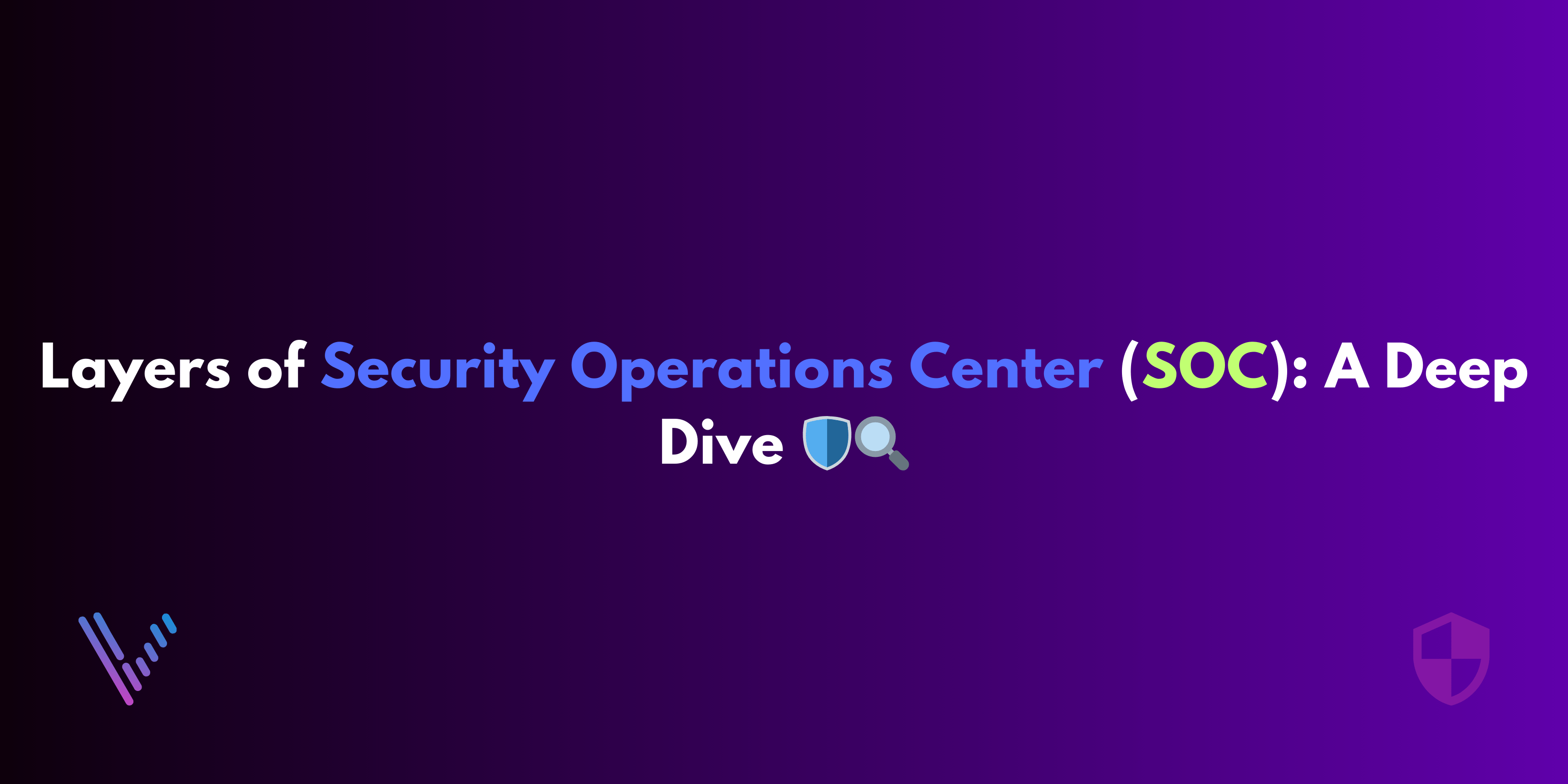Security Operations Centers (SOC) are dedicated hubs for monitoring, detecting, and responding to security threats. A well-organized SOC has multiple layers, each specializing in distinct areas of cybersecurity. Here’s a detailed exploration:
🌐 1. Layer 1: Network Monitoring 🌐
- Function: Watches over network traffic, analyzing patterns to detect suspicious activities.
- Tools: IDS (Intrusion Detection Systems), SIEM (Security Information and Event Management), and network traffic analyzers.
- Prerequisites: Familiarity with network protocols, understanding of common attack vectors, and experience with monitoring tools.
💻 2. Layer 2: Endpoint Monitoring 💻
- Function: Monitors endpoints (like PCs, mobiles, servers) for malware, unauthorized access, or data breaches.
- Tools: EDR (Endpoint Detection and Response) tools, antivirus software, and system log analyzers.
- Prerequisites: Knowledge of operating systems, malware operation, and forensic capabilities.
🔍 3. Layer 3: Threat Hunting & Advanced Analysis 🔍
- Function: Proactively seeks signs of malicious activity that automated tools might miss.
- Tools: Advanced SIEM tools, Threat Intelligence Platforms, sandboxing environments.
- Prerequisites: Proficiency in advanced cybersecurity concepts, knowledge of threat actor TTPs (Tactics, Techniques, and Procedures), and understanding of the cybersecurity landscape.
📊 4. Layer 4: Incident Response & Management 📊
- Function: Manages incidents post-detection, coordinating efforts to mitigate, respond to, and recover from threats.
- Tools: IR (Incident Response) platforms, communication tools, forensic toolkits.
- Prerequisites: Strong organizational skills, knowledge of IR frameworks, and understanding of legal and compliance requirements.
☁️ 5. Layer 5: Threat Intelligence ☁️
- Function: Collects, analyzes, and shares information about emerging threats and threat actors.
- Tools: Threat Intelligence Platforms, OSINT (Open-Source Intelligence) tools, and specialized threat databases.
- Prerequisites: Analytical mindset, familiarity with global cyber threat landscape, and experience in data analysis.
🌍 6. Layer 6: SOC Management & Administration 🌍
- Function: Ensures the SOC’s operations, strategies, and goals align with the broader organizational objectives.
- Tools: Project management tools, KPI dashboards, and HR platforms.
- Prerequisites: Leadership qualities, understanding of cybersecurity at a strategic level, and experience in personnel management.
Each layer, with its dedicated tools, professionals, and objectives, synergizes to provide a comprehensive cybersecurity defense mechanism for organizations.
To understand how a SOC can shield your organization, enhance your cyber resilience, and dive deeper into the intricate workings of each layer, explore [YourWebsiteName]. 🔗
🔐 Stay Ahead of Threats, Stay Secure! 🚀


Leave a Reply